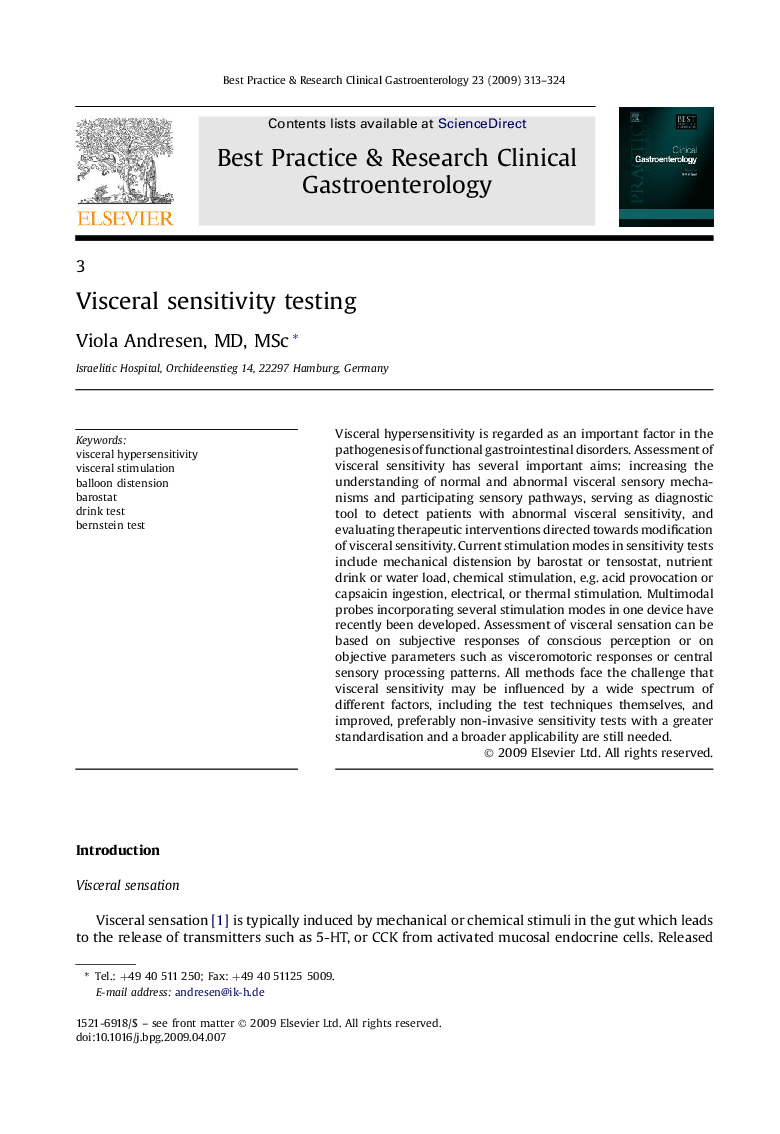| Article ID | Journal | Published Year | Pages | File Type |
|---|---|---|---|---|
| 3254759 | Best Practice & Research Clinical Gastroenterology | 2009 | 12 Pages |
Visceral hypersensitivity is regarded as an important factor in the pathogenesis of functional gastrointestinal disorders. Assessment of visceral sensitivity has several important aims: increasing the understanding of normal and abnormal visceral sensory mechanisms and participating sensory pathways, serving as diagnostic tool to detect patients with abnormal visceral sensitivity, and evaluating therapeutic interventions directed towards modification of visceral sensitivity. Current stimulation modes in sensitivity tests include mechanical distension by barostat or tensostat, nutrient drink or water load, chemical stimulation, e.g. acid provocation or capsaicin ingestion, electrical, or thermal stimulation. Multimodal probes incorporating several stimulation modes in one device have recently been developed. Assessment of visceral sensation can be based on subjective responses of conscious perception or on objective parameters such as visceromotoric responses or central sensory processing patterns. All methods face the challenge that visceral sensitivity may be influenced by a wide spectrum of different factors, including the test techniques themselves, and improved, preferably non-invasive sensitivity tests with a greater standardisation and a broader applicability are still needed.
